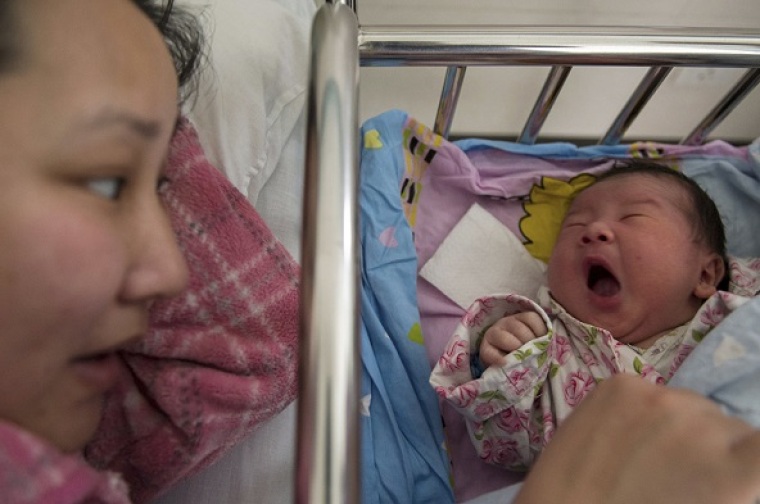China admits it is plunging toward crisis

BEIJING (Christian Examiner) – Health officials in China announced yesterday its population is heading toward crisis levels with its gender imbalance among newborns -- the number of males compared to the number of females -- so out of proportion it is "the most serious and prolonged in the world and the population it affects is the greatest."
The announcement was published by Women of China, an informational website of the government's All-China Women's Federation—whose purpose in part is described as to unite women "to take part in China's [socialist] reform" and "to represent Chinese women in democratic decision-making."
According to a report on WomenofChina.com, China's National Health and Family Planning Commission said, "The ratio for newborns stands at 116, much higher than the world average," and acknowledged the primary cause for the gender imbalance was "the Chinese preference for sons" which leads "to the abortion of many girls." The natural ratio for boys to girls is 105:100 at birth. On top of that, China has a lack of babies overall, showing a total fertility rate (how many babies the average adult woman will have) of only 1.7. A minimum 2.1 TFR (meaning, a mother is bearing a replacement child for herself and her husband) is needed just to keep from losing population.
Bearing 116 boys for every 100 girls means 16 boys of that group, 14 percent, will not even have a mathematical chance at marriage. At present, sociologists predict there will be 30 million adult men by 2020, a mere 5 years away, who will have no marriage prospects among Chinese women, simply because of the imbalance between the genders.
Moreover, data from the financial journal Business Insider suggests the disparity is worse: 120 boys for 100 girls at birth.
Other recently released information is just as dire for China's future.
China will not just level off but actually drop in total population—to about 1.4 billion in 2025, dipping to 1 billion by 2100, according to U.N. data—and it already has peaked in actual numbers of its working-age population (16 to 59 years old), and, it actually lost workers each of the last three years (3.71 million last year, 2.44 million in 2013 and 3.45 million in 2012 (the year of its first drop), Bloomberg News reported.
The combined information points to looming economic and social disaster for China in the coming years. The lack of marriage partners can be offset somewhat by looking to other countries for possible mates.
But China is not the only country facing a population crisis, or a gender imbalance.
India, who will overtake China as the most populous country around 2025 before starting to decline as well in 2060, is facing a similar gender gap (also, because of sex selection abortion which favors males) as well as a general flagging total fertility rate.
This is startling because China and India combined compose 37 percent of the world's population.
Social unrest is possible because of men not finding wives, and economic distress will come into play from neither having enough workers to support the very young and very old. A labor advantage is the locomotive for both economies.
Last year, China began a pilot program to ease its 35 year old one-child per family policy, allowing couples in certain regions of the country to apply for exceptions for an additional child.
But the news is not good.
There were an estimated 11 million eligible couples and officials hoped for 2 million of these to apply for the 2-child waiver. However, Xinhuanet.com, an official media outlet of the Chinese government reported that near the end of last year, only 700,000 couples, roughly, had applied.
"The Health and Family Planning Commission explains that the low numbers may be due to the short period of time since the new policy was implemented, as well as change of mindsets among educated urban residents," the article said. "The commission adds it may take two to three years before we see any notable changes from the new policy."
Regardless of the disparity between girl and boy babies, China will need to boost its baby numbers overall to pull out of the census nosedive it is facing. However, even if it achieves overnight the minimum 2.1 children for every adult woman, it will take 50 years for the decline to end and the population to stabilize at no growth and no loss.